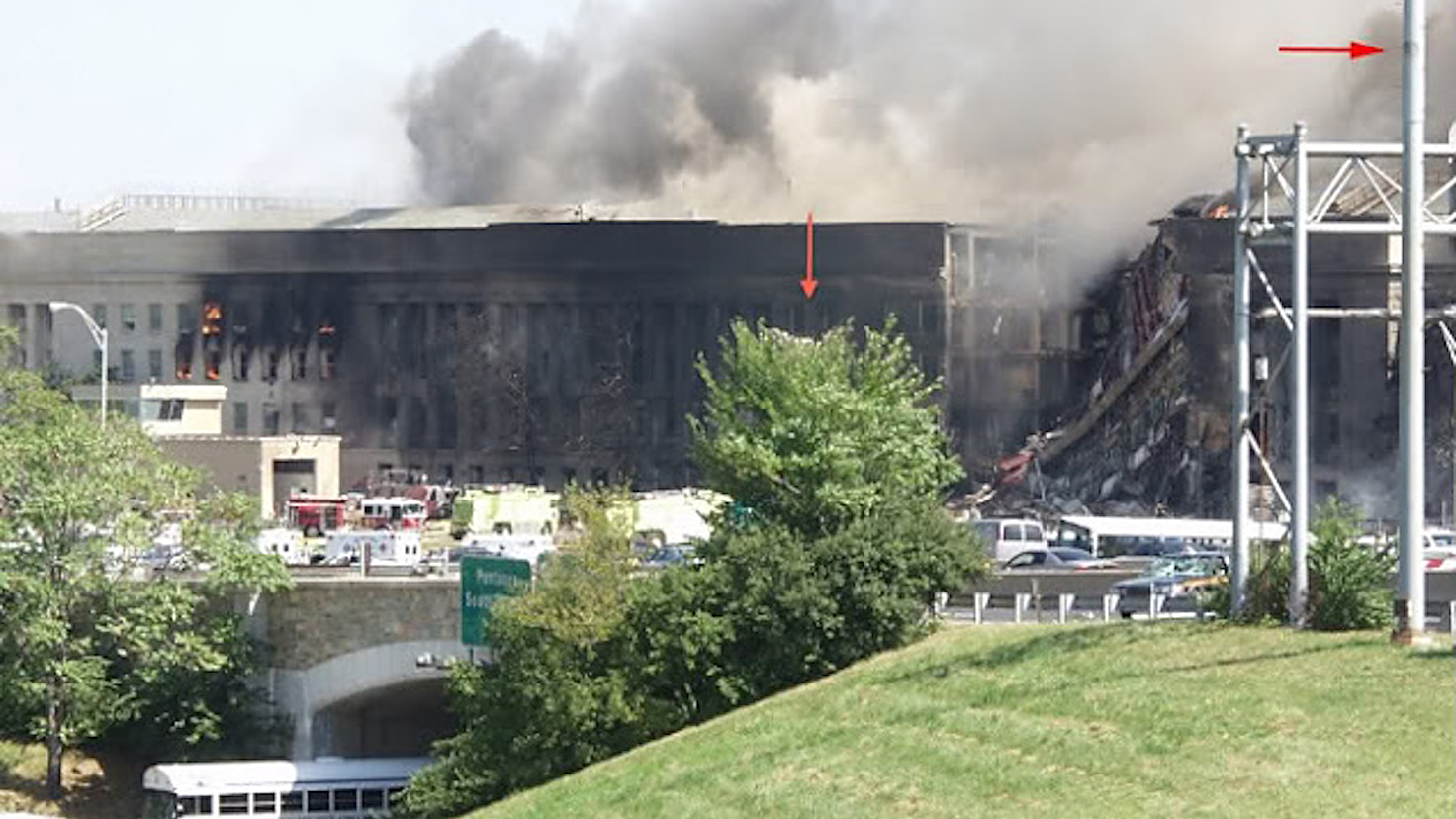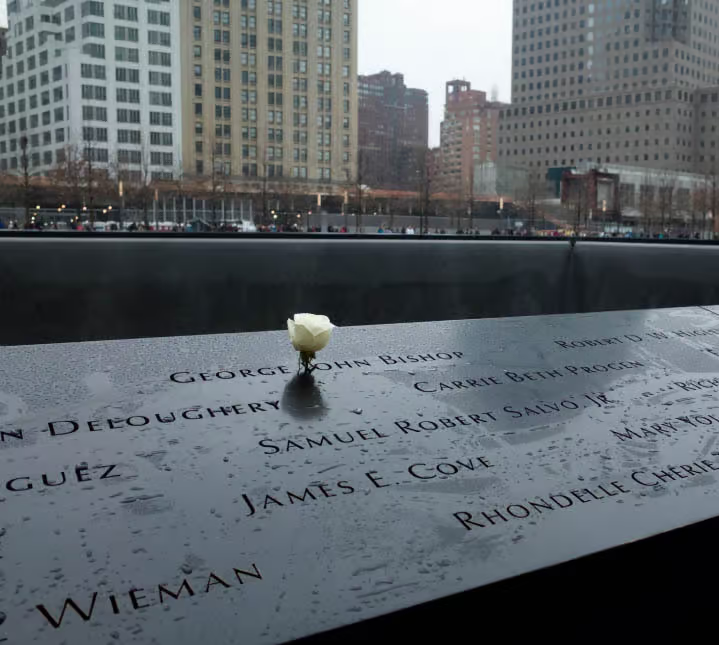Editor’s Note: This is an old version of a paper that was republished with minor revisions on January 30, 2025. The revised and current version can be found here. This paper is a response to the June 2024 paper by Mehmet Inan, which can be read here.
Agreeing with Mehmet Inan that what struck the Pentagon was a plane, one clear way to distinguish its dimensions is to examine the objects it impacted as it transited from the Hwy. 27 overpass to the Pentagon.
- Five light poles were knocked down (Figures 2 and 6 [1]). Three of these poles are especially significant in our immediate inquiry.
- The vertical shafts of the first and third poles were solidly hit by the right wing and were severed.
- The vertical shaft of the second light pole was lightly grazed by the left wingtip. The shaft was bent ~90° and knocked over, but did not break. This contact provides a precise data point for the plane’s left wingtip.
- The right engine of the incoming plane cut out a circular arc at the top of a tree on the overpass, as with a dull blade, leaving frayed ends. (Figure 1 [2])
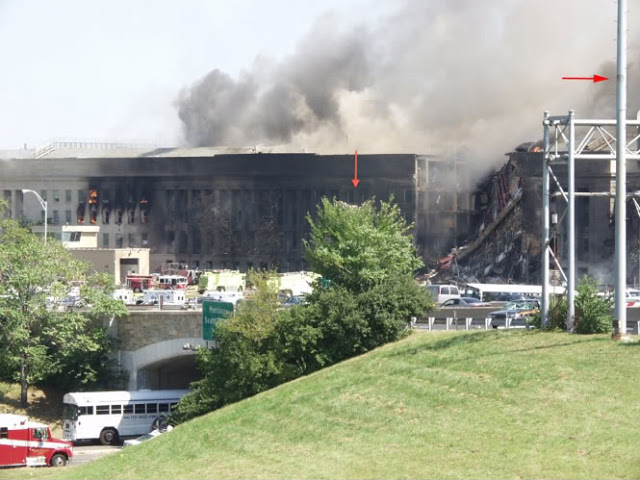
- A Virginia Department of Transportation (VDOT) highway camera pole, close to the tree and the first light pole, has a surface scar and is missing a rung (Figure. 1). There are no “before” pictures of the camera pole for comparison, but the positioning and the nature of the damage are consistent with its being grazed by the right wingtip. The lateral spacing between the camera pole and second light pole is ~125 ft.
- One other piece of physical evidence of impact was the leading wing slat from the right wing of the incoming plane, Figure 3, that was dislodged and dropped onto the lawn prior to the plane hitting the Pentagon wall. For this piece to be dislodged from the wing, the impacts from light poles 1 and/or 3 would have to make solid contact with this part of the wing. This debris fragment is discussed in the video, Chapter 12: Explanation of the Evidence at the Pentagon on 9/11 which can be found at https://911speakout.org/wayne-coste/ or directly on YouTube at https://youtu.be/amvxGqCmYkc?si=Nrzi0fCATlG8DLTu&t=813.
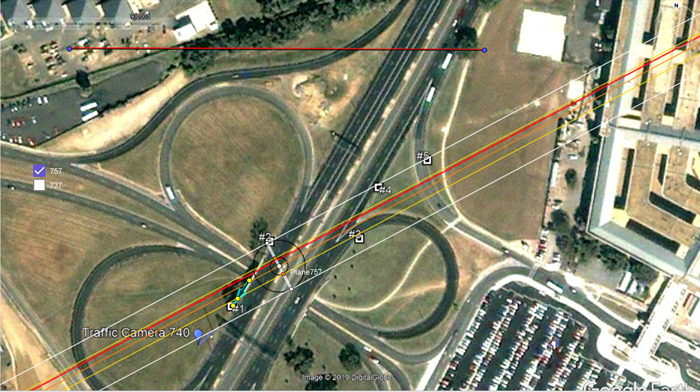
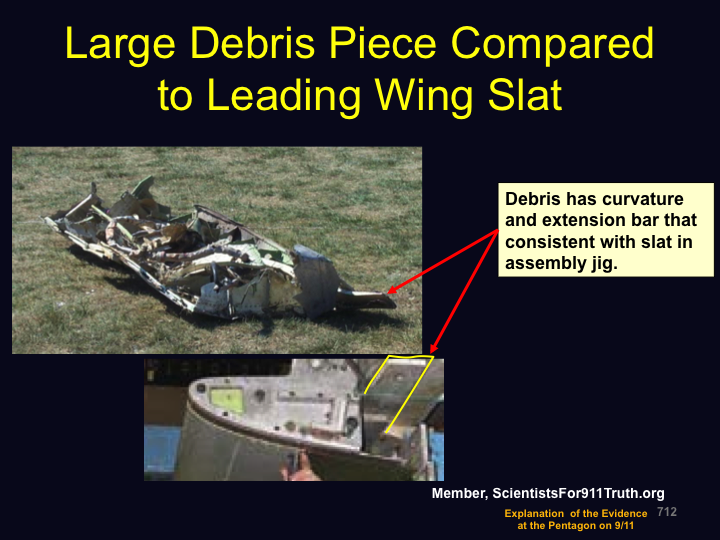
Boeing 757 Hypothesis
Figure 2 shows the flight path of the Pentagon plane using the wingspan and “engine span” of a 757 and the direction of motion (red line) given by the flight data recorder (FDR) whose data module was recovered in the Pentagon debris. The 757 wingspan is 124 ft 10 in, as documented in Figure 4. [3]
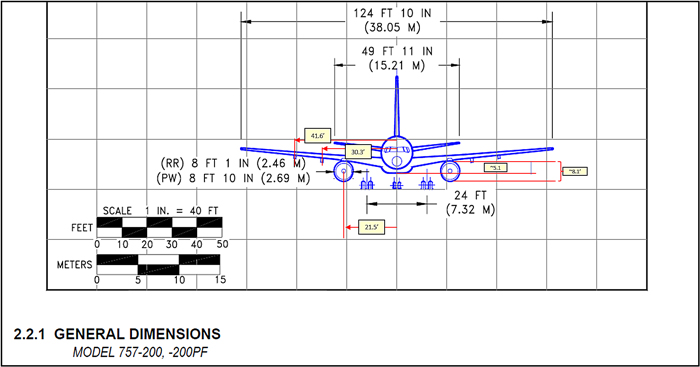
Positioning the left wingtip at light pole 2, the right engine passes directly through the notch in the tree indicated by a yellow dot at the tip of the black arrow in Figure 2 [4] and the right wingtip touches the VDOT camera pole. It is hard to imagine that this spacing is coincidental, given the other corroborating evidence. Furthermore, with this wingspan and this positioning, the 1st and 3rd light poles impact the leading right wing slat just outside the right engine. Such a double impact on the wing slat can account for its damage causing it to dislodge and drop onto the lawn.
The alignment of all of these points of contact is consistent with the hypothesis that the Pentagon plane was a Boeing 757.
Boeing 737 Hypothesis
To evaluate the Boeing 737 hypothesis, I have produced a second construction (Figure 6), with the wing span and “engine span” of a 737-400 (94.75 ft and 31.6 ft respectively), as documented in Figure 5. [5] Note in Figure 6 that if the left wingtip touches the 2nd light pole, the right wingtip misses the VDOT camera pole by a wide margin, and the right engine not only misses the notch in the tree but appears to miss the tree entirely. Furthermore, although it is possible to find a path for the wings to touch all five light poles, all of them would be grazing contacts with the wingtips. Such contacts cannot account for the fact that the vertical shafts of poles 1 and 3 were severed, and none of the impacts with the poles would have contacted or dislodged the leading wing slat of the right wing that was found on the lawn.
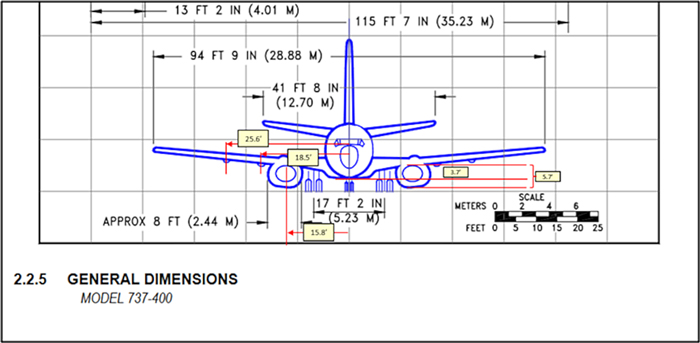
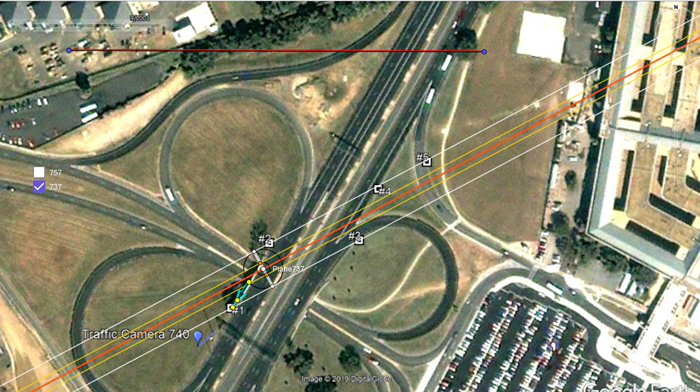
Conclusion
The Boeing 737 hypothesis fails to account for the observations, whereas the Boeing 757 hypothesis accounts for all of these observations.
References and Endnotes
- Source: Google Earth.
- Source unknown.
- Boeing Corporation, 757-200/300 Airplane Characteristics for Airport Planning, p. 13, August 2002, https://www.boeing.com/content/dam/boeing/boeingdotcom/commercial/airports/acaps/757.pdf
- The graphical construction to locate the notch in the tree in this overhead view is discussed in the paper “Pentagon Approach Path of a Boeing 757 on 9/11/2001” by David Chandler, currently being reviewed for publication in the Debated Topics Forum.
- Boeing Corporation, 737 Airplane Characteristics for Airport Planning, p. 32, September 2013, https://www.boeing.com/content/dam/boeing/boeingdotcom/commercial/airports/acaps/737.pdf

